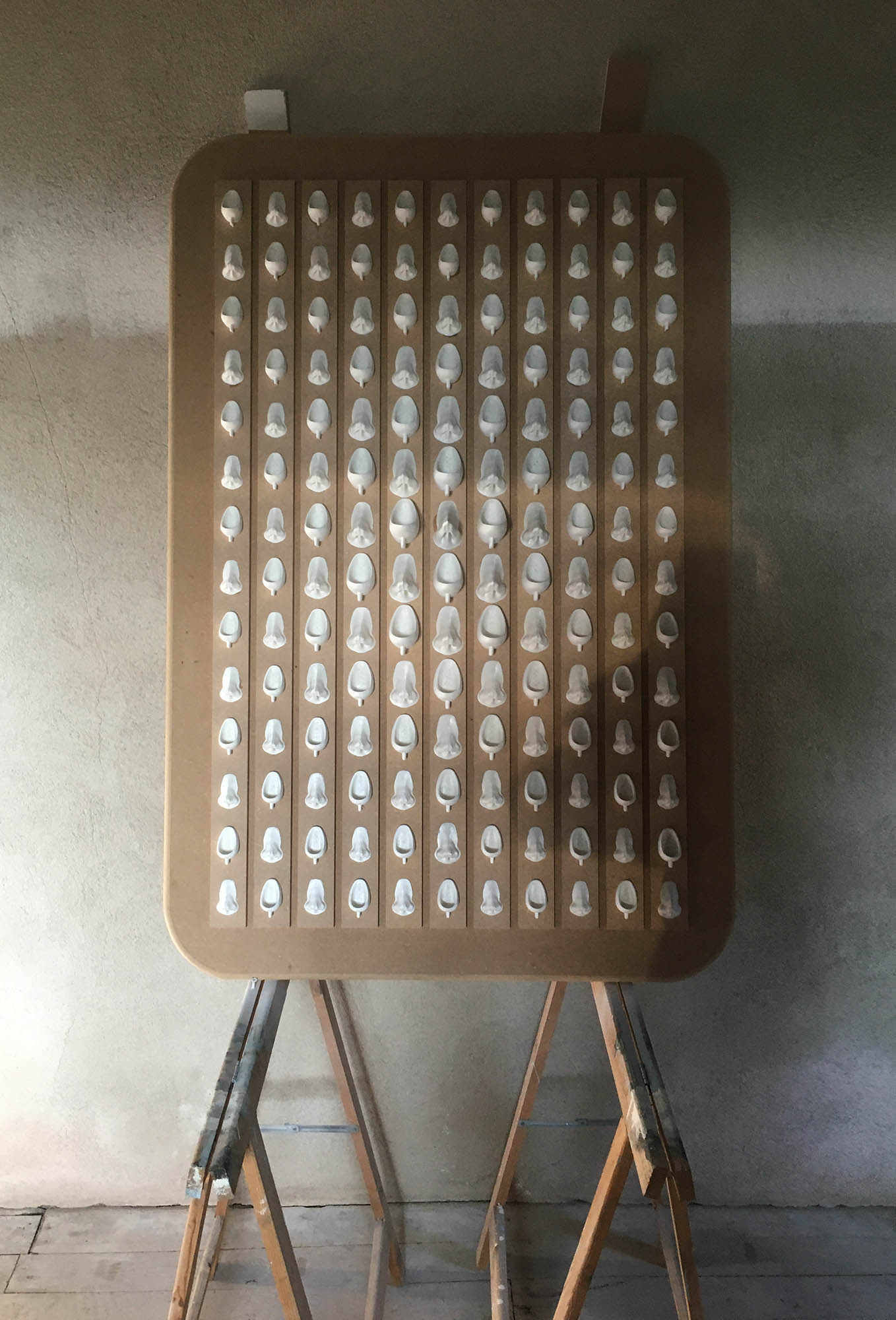Technique
The conception of Adriaan’s ideas starts in a conventional way. Café terraces and trains are his favorite places to develop his creations before the computer is used to experiment with the construction of virtual scenes.

To transfer the virtual scenes to reality the invention of 3D printing becomes the ideal solution. The scenes can be printed and become real.




These scenes often contain hundreds of 3d printed objects, sometimes geometrically ordered, sometimes randomly composed. He constructs them in virtual space first.The next step is to project a basic image of the 3d objects onto the canvas or boards. This gives the perfect guide to where to glue the printed versions of the objects.
The maximum size that the printer can handle is limited so often the model is divided into smaller segments which are printed separately and then glued together. The resulting sculpture more resembles a bas-relief than a movie screen.


The moving images, sometimes videos, and animated light sources are created to test the interaction and to preview the final effect. These moving elements are then rendered into videos. The videos are fed into compositing and video mapping software where color grading and distortion correction, caused by the peaks and valleys of the sculpture, are applied.

The output is projected by 4k video projectors on exactly the same models that exits in the virtual scenes.

